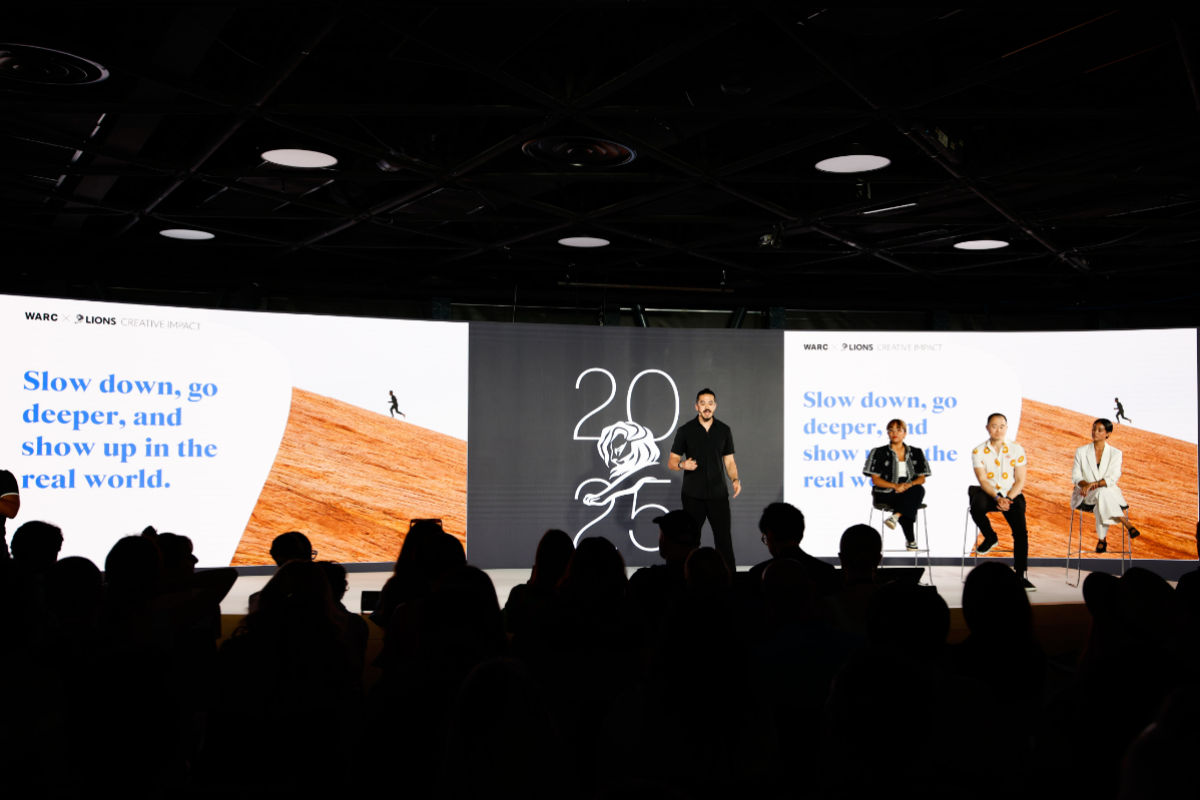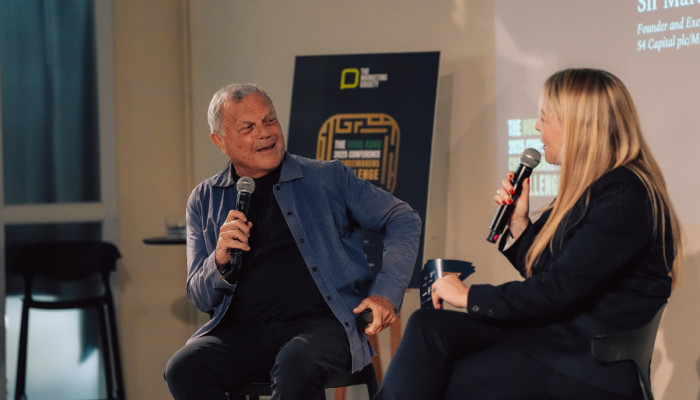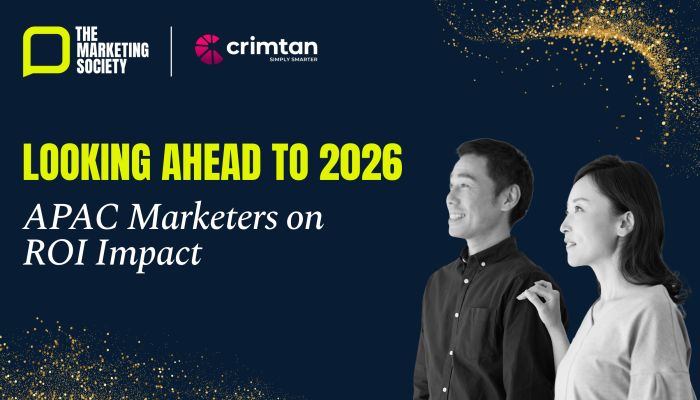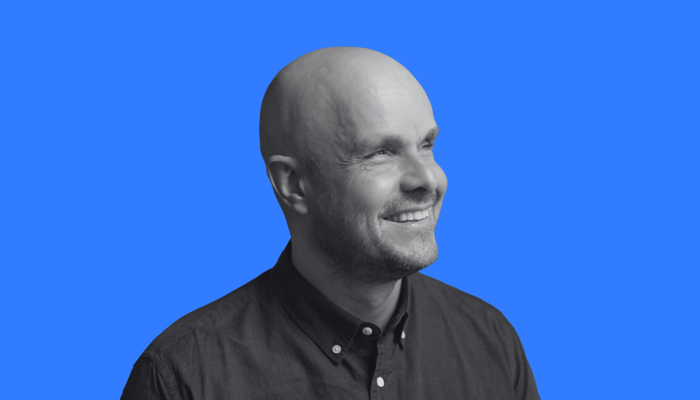The pace of marketing has never been faster, but does speed mean sacrificing long-term brand building? At the Creative Impact Unpacked session on the iconic Rotonde stage at Cannes Lions Festival of Creativity, industry leaders from across Asia, including Andreas Krasser, The Marketing Society Board Member came together to tackle one of marketing's most pressing questions: how do we move fast and build brands simultaneously?
Hosted by Rica Facundo (Managing Editor, APAC WARC), the panel featured Andreas Krasser (CEO, DDB Hong Kong), Jiunn Shih (Chief Marketing, Innovation and Sustainability Officer, Zespri), and Dione Song (CEO, Love, Bonito), each bringing unique perspectives on balancing speed with sustainable brand growth.
The Asian Speed Paradox
Rica Facundo opened the session by highlighting a startling statistic: the rate of change businesses face today has increased 183% between 2019 and 2023. "In Asia, the pace of change doesn't just feel fast, it is magnified," she explained, describing how scale and diversity compound every challenge and opportunity.
The evidence is everywhere: street vendors in India accepting QR code payments without bank accounts, 70% of Asia-Pacific online payments using digital wallets compared to just 30% in Europe, and local brands like Indonesia's Somethinc skincare commanding 7% price premiums over average brands despite launching only in 2019.
Central to the discussion was WARC's groundbreaking Pace Principle study, the first Asian effectiveness research to challenge Western-centric marketing data. The key finding? The most effective campaigns maintain a 50/50 split between brand building and performance marketing, with this principle holding true across Asia, the US, and EMEA.
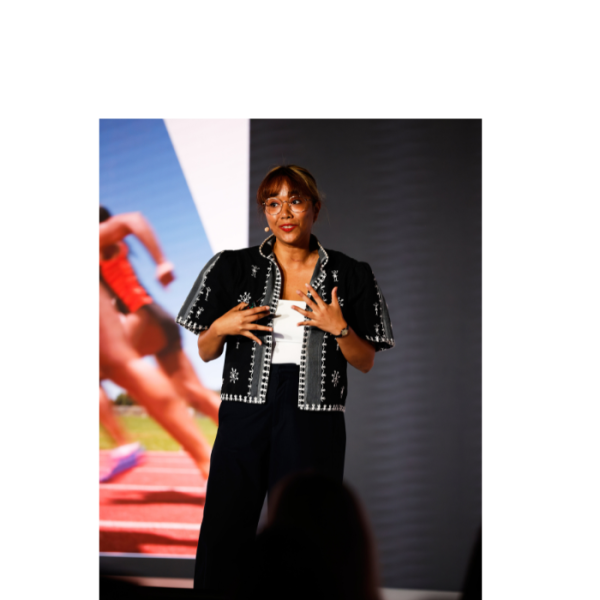
"Marketing is like a race for growth with twin paces—sprint pace for short-term goals and long-distance pace for sustained growth. You need both."
Rica Facundo WARC, APAC
Moving at the Speed of Culture: Andreas Krasser's Challenge
Andreas Krasser, delivered one of the session's most provocative segments, directly challenging the industry's favourite buzzphrase: "Move at the speed of culture."
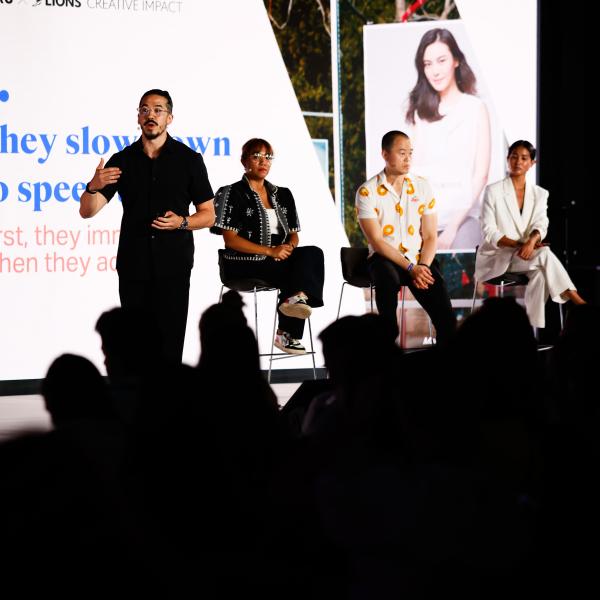
"I personally am guilty as charged—I've used it before. And why not? Because it sounds cool, it sounds modern, and it sounds urgent. But the problem is that it's often used as an excuse to make shortcuts—just slap a random meme on a campaign, follow a random trend, and sometimes segment your audience by old school or very outdated stereotypes."
Andreas Krasser DDB Hong Kong
The Cultural Volcano Model
Moving beyond Edward T. Hall's traditional Cultural Iceberg model, Andreas introduced his own framework: the Cultural Volcano Model.
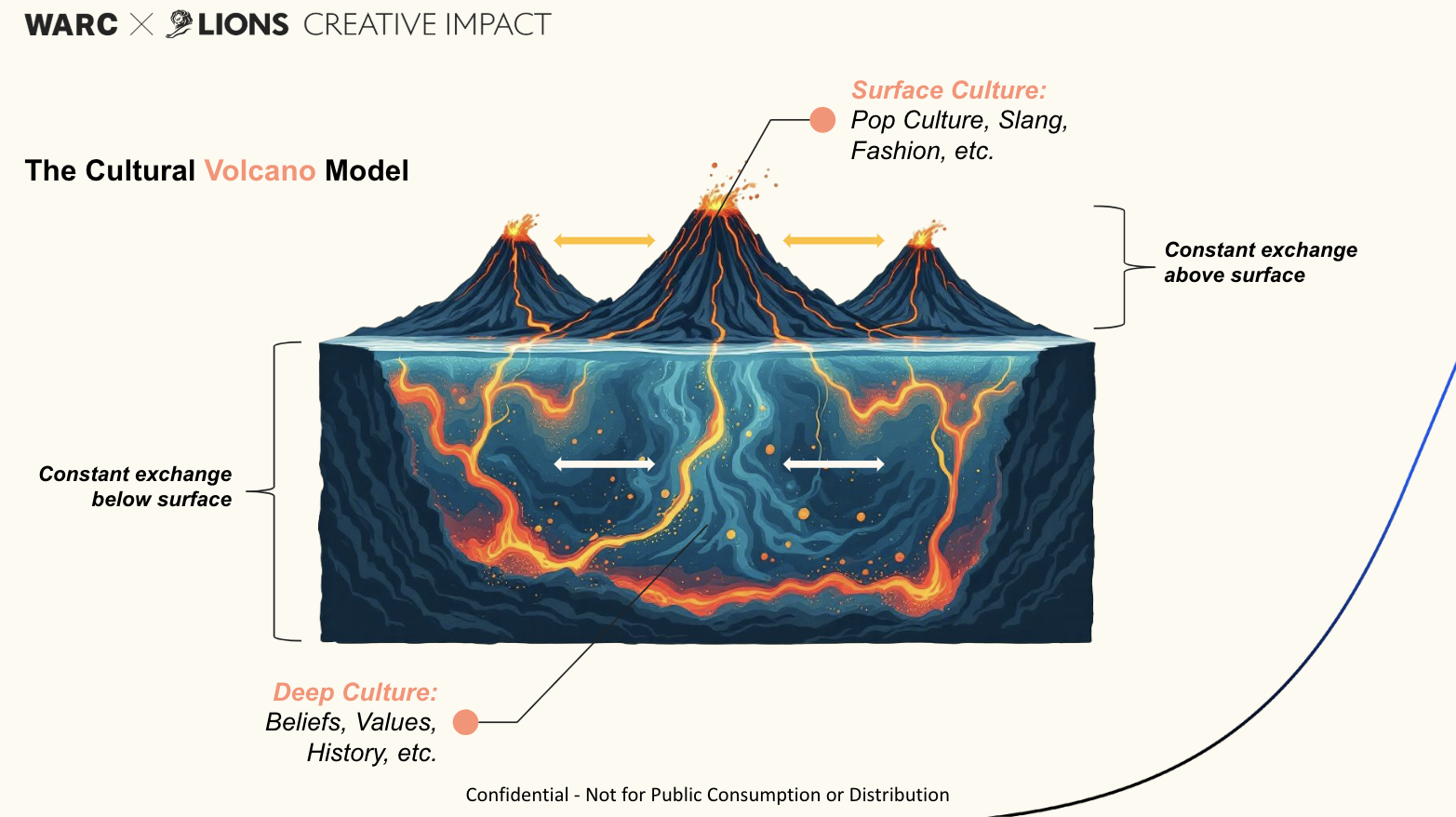
"Culture is not frozen. It's not static. It's the opposite—it's hot, it's volatile, it's always evolving, always moving," he explained. In this model, each major culture represents a volcano with visible pop culture on the surface and deeper values, beliefs, and history in the magma chamber below.
Crucially, "these volcanoes don't stand in isolation—they are all interconnected. When one volcano erupts, we see the effects in other volcanoes as well." This reflects today's hyper-connected world where cultural exchange happens constantly and globally, not just from West to East but increasingly from East to West.
The Business Case for Cultural Depth
Andreas presented compelling data showing that brands creating campaigns focused on values and demonstrating shared perspectives achieve almost double the business impact compared to those that don't. "Creating a cultural connection compounds business results," he emphasised.
Yet most brands barely scratch the surface, leading to the familiar pitfalls: slapping local faces on global campaigns or jumping on trends without understanding their cultural significance.
Four Principles for Cultural Advantage
Andreas outlined four key strategies that winning brands use to move beyond surface-level culture:
They slow down to speed up
Rather than reacting blindly to trends, successful brands invest time in understanding communities. "They immerse themselves. They take the time to really understand and listen to their audiences, listen to the communities that they're trying to engage."
Example: SK-II in China spent years understanding the hopes, worries, and anxieties of their target customers before creating their "Marriage Market Takeover" campaign, which tackled societal stigma faced by unmarried women.
They challenge shortcuts
"They don't just rely on outdated stereotypes. They actually invite the people that they want to engage into the process. They co-create with the communities that they want to reach."
Example: Singapore's National Heritage Board created "Recustom" by inviting designers, local tailors, and the public to collaborate, reviving local tailor shops through co-created fashion patterns available only through traditional tailors.
They design for intersections
"They create for overlapping cultures and not just one. They don't see culture as fixed or monolithic—they design for these intersections and embrace fluidity."
Example: McDonald's India created "EatQual" burger packaging for people with upper limb disabilities, co-creating with NGOs and disability advocates to design for overlapping identities.
They build diverse teams
Andrews cited McKinsey research showing that culturally diverse executive teams are 36% more likely to have above-average profitability. "When you have people at the table with different backgrounds, different lived experiences and different perspectives, you're far more likely to spot blind spots, avoid potential tone-deaf mistakes, and create work that really resonates."
The Ultimate Warning
Andreas concluded with a memorable warning about the dangers of surface-level cultural engagement: "If you don't do so, you're basically just an old guy at the bar that tells everybody how cool he is, and we all know how cool that guy really is."
Real-World Applications: Zespri and Love, Bonito
Jiunn Shih from Zespri demonstrated these principles in action, showing how the kiwi fruit brand built global success through purpose-driven marketing. With the philosophy that "doing good builds good business," Zespri maintains their 50/50 brand-performance split across 56 markets, from promotional pill boxes in Singapore that remind people to eat fruit daily to drone-delivered sampling in Chinese cities.
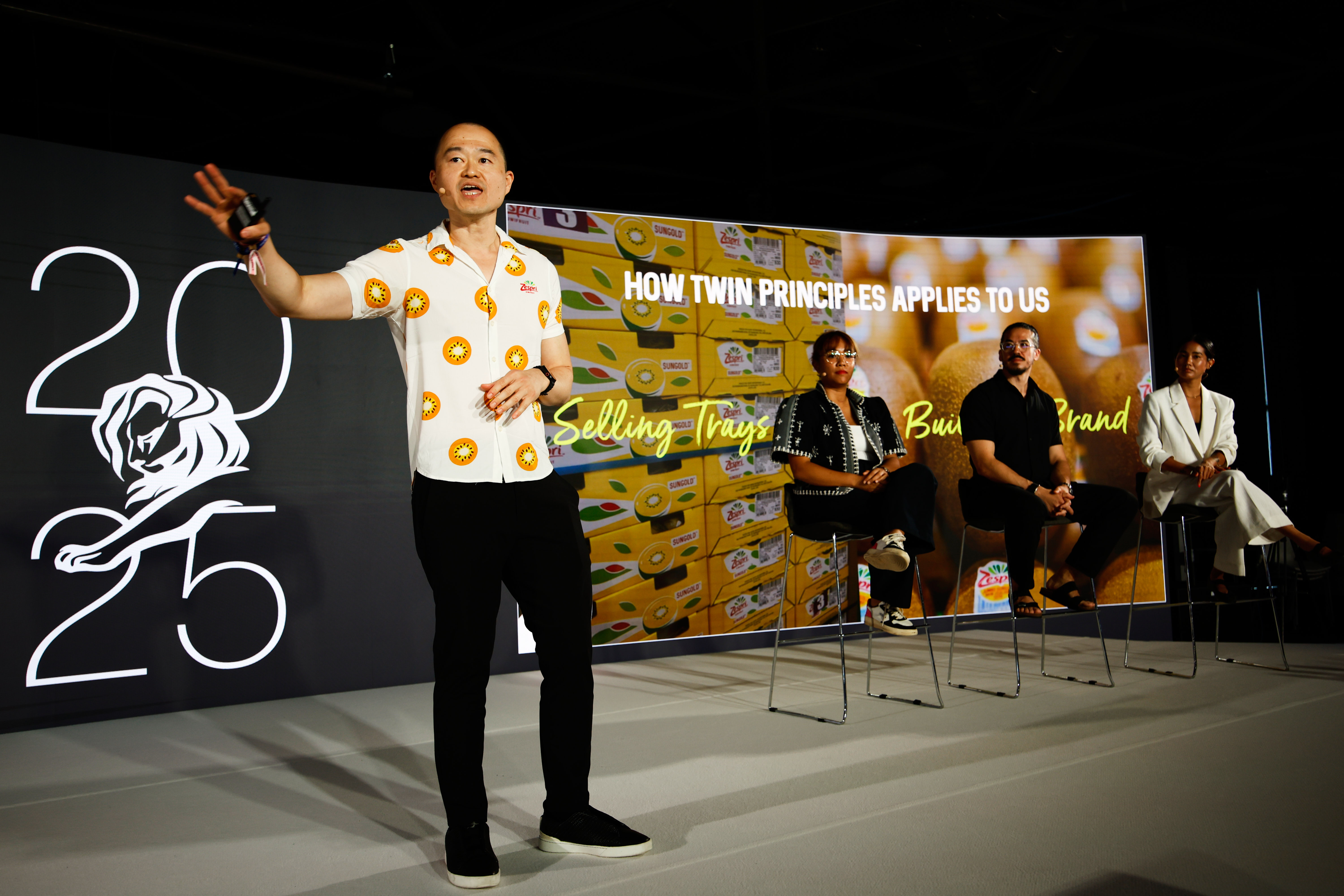
Dione Song from Love, Bonito shared how the Southeast Asian fashion brand scaled from blog to regional powerhouse by staying true to their purpose of "celebrating and uplifting the Asian woman." Their approach included practical innovations like blazers with elastic sleeve bands and pants with hidden waistband stretch—proving that understanding real customer needs drives both brand loyalty and commercial success.
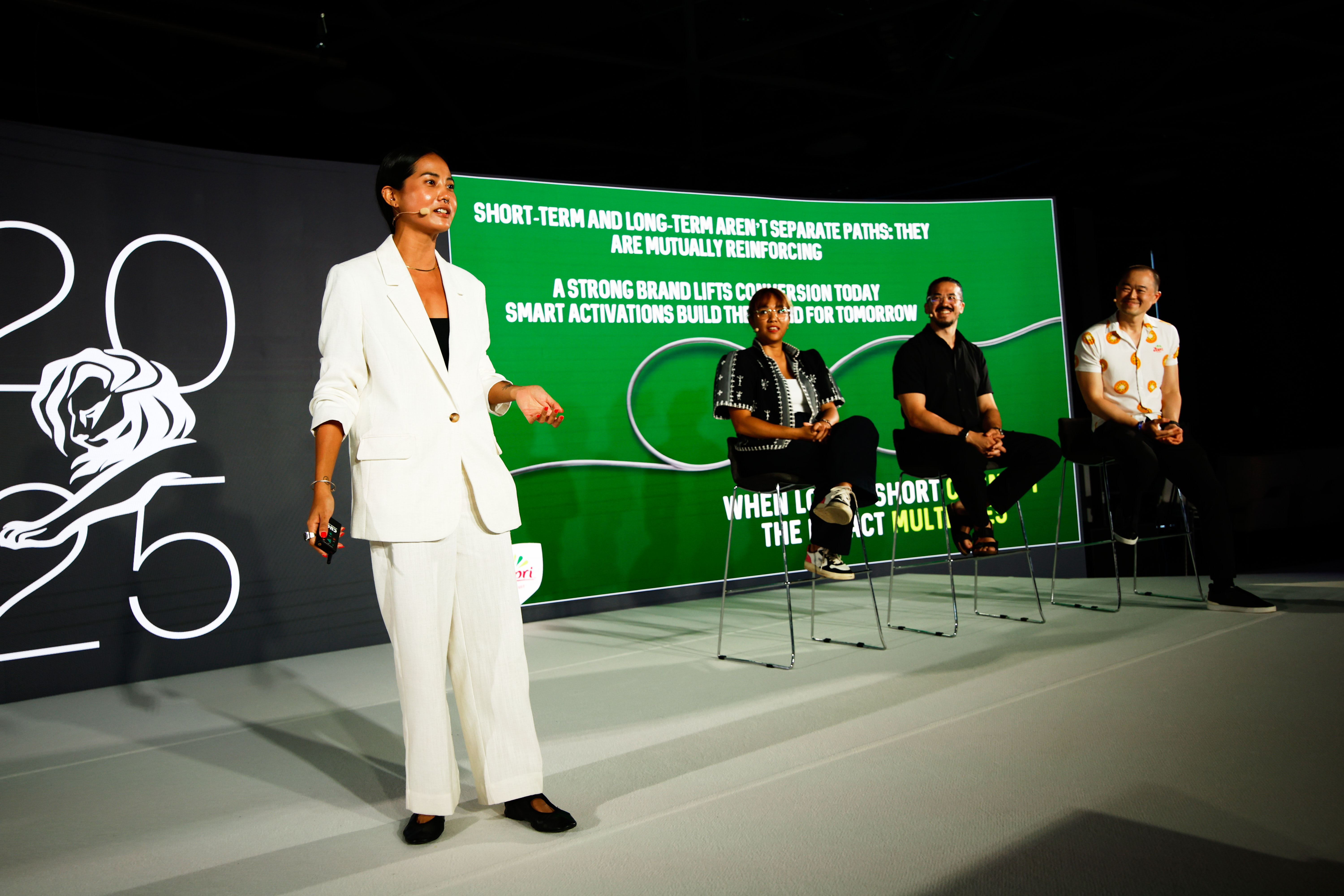
Key Takeaways
The Creative Impact Unpacked session delivered several critical insights for marketers navigating today's accelerated landscape:
1. Speed doesn't mean sacrificing brand building
the most effective approach combines both in equal measure
2. Cultural relevance requires depth, not shortcuts
invest in understanding communities before engaging with them
3. "Move at the speed of culture" should mean slow down first
immerse, understand, then act with confidence
4. Diverse teams and co-creation unlock authentic cultural connections
that drive superior business results
5. Purpose provides clarity for fast decision-making
knowing what you stand for enables speed without compromise
As the session concluded, the message was clear: in an era where everything feels like it's moving at breakneck speed, the brands that win are those that take the time to understand culture deeply, build authentic connections, and maintain the discipline to balance short-term performance with long-term brand building.
The future belongs not to the fastest movers, but to the most culturally intelligent ones.
Think piece by Rachel Letham, based upon transcript of the session and using AI to build the content - always checked by a human
